Picture a tiny creature whose world is built of tunnels, night shadows, soft bedding, and the scent of seeds. Within that realm, every chew is necessary, every hiding place treasured, and every good night’s sleep earned. As someone who cares for a hamster, we hold the keys to making that world safe, rich, and alive. But caring well isn’t just about love — it’s about choosing the right tools: cages, wheels, hides, bedding, and more. Let me take you on a journey through hamster life, showing where and why particular products can make a real difference.
Origins, Instincts, and Daily Needs
Hamsters in the wild dig, forage, stash, and hide. Their instincts lead them to burrow, to hoard food, to chew persistently, and to move when the world is still. Because they are crepuscular or nocturnal, much of their meaningful life happens when we humans might be asleep. Understanding that is essential: if your hamster seems “lazy” by day, that’s normal.
Also, though small, their biology is delicate. Their teeth grow continuously; their digestive systems are sensitive; they show stress in subtle ways (less grooming, hiding, change in feces). Illness like “wet tail” (a serious bacterial diarrhea condition) can arise rapidly, especially in young or stressed hamsters.
So while affection matters, so does environment. The right combination of enclosure, enrichment, diet, and safety sets the stage for a long, healthy life.
Building Their Home: Enclosure, Bedding, Tunnels
From the moment you bring your hamster home, you begin to build their world. The cage is more than walls — it’s the stage on which they will stretch, dig, hide, and explore.
Enclosure & Habitat
A spacious cage is non-negotiable. Experts often recommend a minimum floor space (for example, about 100 × 50 cm or more for Syrian hamsters) to reduce stress and allow normal activity. A tall cage with many levels or tubes may look appealing, but one must ensure stability (so it doesn’t tip over) and ease of access for cleaning.
One product idea is a modular tube habitat set (similar to Habitrail systems) that lets you build tunnels and chambers. But be cautious: many tubes are too narrow, poorly ventilated, or difficult for the hamster to turn in. In fact, some reports and reviews caution that tube systems are overused in cages, and for larger hamsters the tubes may be too constraining. So if you use one, ensure tube diameters are adequate and there are plenty of exits.

To buy this product, click here.
Bedding & Nesting Material
Deep, soft bedding is essential — not just for comfort but for burrowing behavior. According to veterinary guidance, safe bedding includes unscented, paper‐based materials, corn fiber, hemp, or aspen shavings. Avoid cedar or strongly scented wood products.
One product you might look up is “Care Fresh” paper bedding, which many hamster keepers praise for its absorbency and low dust. On hamster forums, people say:
“I use Care Fresh bedding … she seems to like it and it holds a burrow pretty well.”
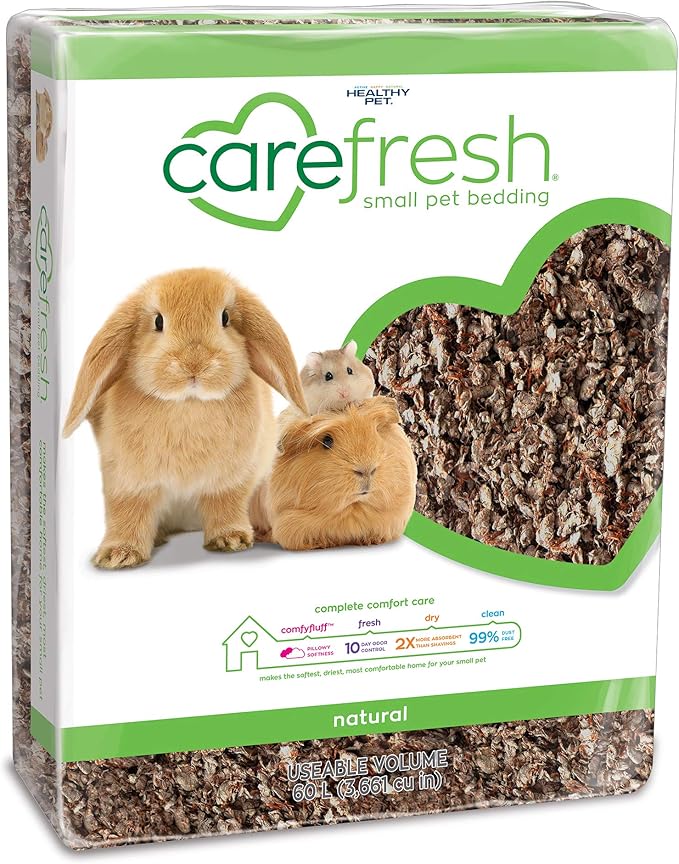
To buy this product, click here.
When selecting bedding: go for depth (at least several inches so the hamster can dig), low dust, no added scents, and nesting bits (e.g. paper strips). Replace regularly, but not too aggressively: hamsters value territory and their own scent trails.
Hiding Places & Tunnels
Hamsters need secure spaces — little houses or hideouts where they can retreat. Natural wood hides, ceramic huts, or hide boxes work well. You might look up a cedar‐free wooden hide box. The material should be chew‐safe and non-toxic. Some hides double as platforms; others can be part of a multi-layered habitat.

To buy this product, click here.
Tunnels, whether plastic or wooden, add exploration paths. But avoid overly long or steep tunnels. Ensure ventilation and multiple entry points.
Movement, Exercise, and Enrichment
Hamsters are dynamic little beings. Without sufficient exercise, they become bored, stressed, or prone to obesity.
The Great Wheel
A running wheel is practically a universal “must.” A hamster will often run several kilometers per night. The trick is to choose one of the correct size: for Syrian hamsters, a wheel diameter of about 28 cm (or more) is often recommended so their spine stays straight. For dwarf species, smaller diameter wheels suffice.
One product to search: silent or whisper‐quiet running wheel (often marketed for small pets) with solid running surface. Wheels with bars or gaps may catch toes or nails. Also, quieter wheels help because hamsters often run when humans are sleeping.
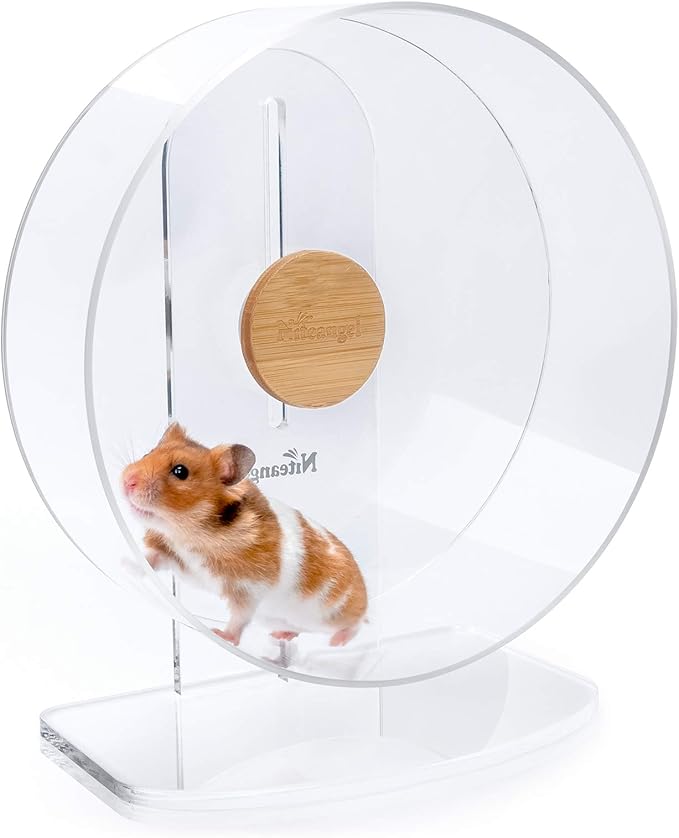
To buy this product, click here.
Another idea: multi-level or climbing structures with platforms or ladders to encourage movement and vertical exploration.
Puzzle Toys & Foraging
To keep their minds active, foraging or puzzle feeders are excellent. A small “treat maze” or food ball / slow feeder encourages the hamster to work for its food, simulating natural foraging. Scatter feeding (placing bits of food in bedding) is also recommended to stimulate instinctive behavior.
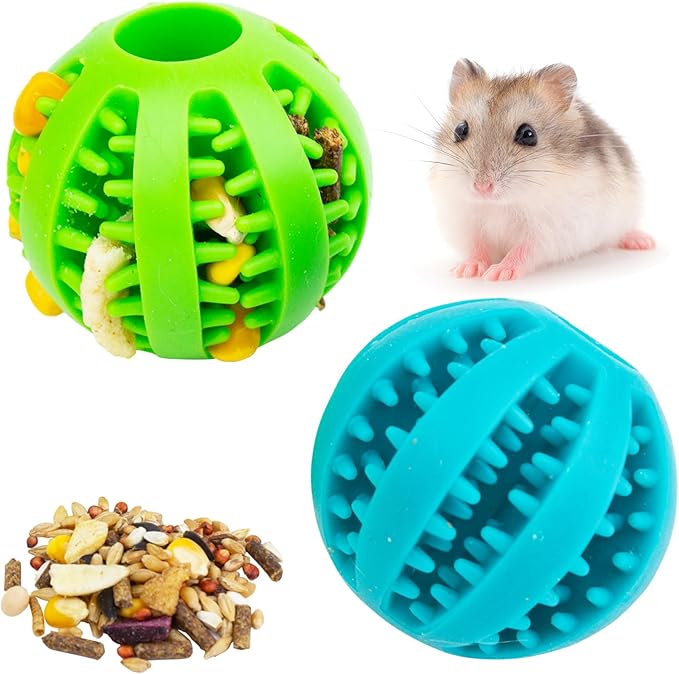
To buy this product, click here.
The Hamster Ball Controversy
You may have heard about hamster balls — transparent plastic spheres in which you place the hamster, allowing them to roam outside the cage. While once common, many experts now caution against their use. Hazards include:
- Loss of control over direction or speed
- Risk of injury when rolling down stairs or hitting walls
- Inadequate ventilation
- No ability for the hamster to hide (its prey instincts).
If you do choose one, use it only on flat surfaces, supervise closely, and limit session lengths.
Diet, Health, and Care
The food your hamster eats, the way you monitor health, and your daily habits make or break its wellbeing.
Nutrition: Balanced Diet & Treats
A base of high-quality commercial food (often pellets or “block + seed mix”) is wise. One frequently cited example in care guides is Mazuri Rat & Mouse Blocks plus a seed mix (such as Higgins Sunburst). Scatter small portions around the cage to encourage foraging. Fresh vegetables (small bits of carrot, cucumber, leafy greens) can be offered, but remove them if uneaten (to prevent spoilage). Avoid sugary or fatty treats.
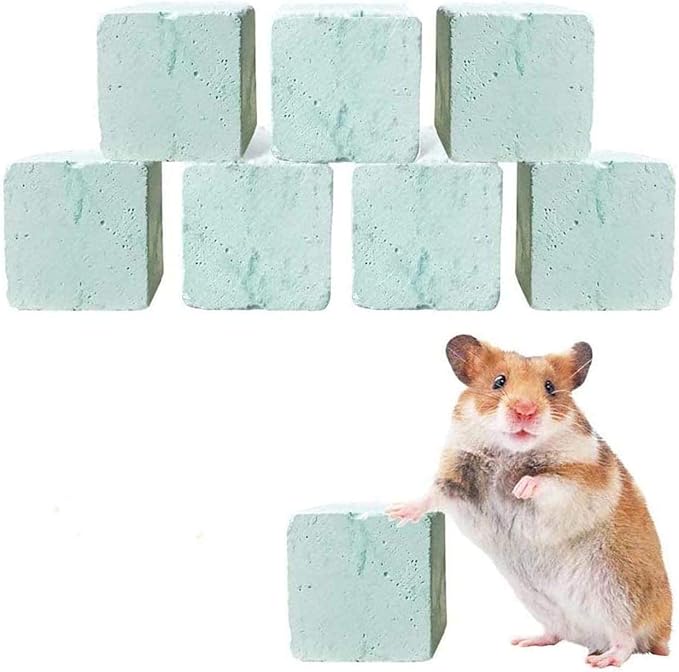
To buy this product, click here.
Water must always be available: a water bottle with a ceramic base is more stable and less likely to tip. Some specialty feeders or ceramic holders for water bottles are sold among hamster accessory lines.
Regular checkups of weight, coat condition, eyes, teeth, and appetite are essential. If a hamster stops eating, shows diarrhea (especially wet tail), becomes lethargic, or has grooming neglect, veterinary attention is urgent.
Chewing & Dental Health
Since hamster teeth grow continuously, safe chew toys are crucial. Look for untreated wood chews, pumice stones, or chew blocks. Many pet supply stores and Amazon listings include wood chew blocks or gnaw sticks labeled “safe for small animals.” Rotate chew items to keep them interesting.
Hygiene & Cleaning
Clean the cage weekly or more often for areas soiled with waste. But don’t disturb the entire setup daily — hamsters rely on parts of their no-trespass zones and scent trails. Replace the bedding in layers, leaving some nesting material for them to reuse. Wash hideouts, wheels, and tubes with mild animal-safe cleaning solutions (no strong chemicals). Materials that absorb odors or moisture (like cardboard) might need replacement periodically.
A Day in the Life (with Products in Use)
Let me paint a typical evening in a well-set hamster home with the products in place:
As dusk falls, your hamster wakes. It steps out of its wooden hide hut (chewable, cozy) and sniffs the air. The bedding (a thick layer of paper-based substrate) cushions its steps and allows it to dig a shallow tunnel. You hear the soft hum of the silent running wheel as it begins its nightly run — perhaps 2, 3, or more kilometers in silent turns, all while you rest.
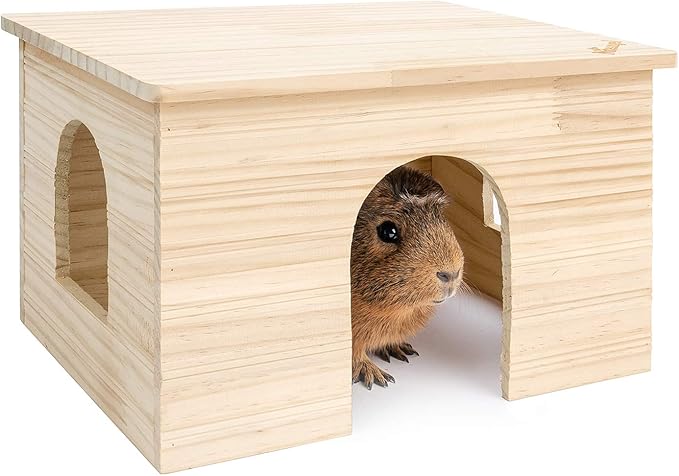
To buy this product, click here.
After running, it explores various plastic or wooden tunnels connecting hideouts, a small platform, and a feeding corner. In the feeding area sits a slow feeder or puzzle toy — a rotating ball or twist puzzle — with scattered sunflower seeds or pellets. The hamster nudges compartments open, persuades bits of food out, fulfilling its instinct to forage.
Later it returns to stash a few seeds in a corner or bury them in bedding. It chews at a wood chew block to wear down its incisors. Then, in its cozy nest, sometimes reinforced with extra paper strips or soft material, it returns to rest — still breathing in faint scent traces and feeling secure in its constructed world.
Throughout, fresh water drips from a stable water bottle mounted to the cage wall, often held in place by a ceramic or weighted base to prevent tipping. The owner might peek in once, noticing the hamster’s activity, checking its fur, its energy levels, ensuring everything looks normal.

To buy this product, click here.
When morning arrives and the household wakes, the hamster likely retreats to quiet, deep sleep until dusk returns.
Why the Right Products Matter (Not Just Decoration)
One might argue: can’t I just use a basic cage and improvised items? Sometimes you can — but the consequences are real. A too-small wheel can hurt the hamster’s spine; dusty or scented bedding might cause respiratory issues; tubes too narrow can trap the hamster or cause stress; lack of chew toys can lead to dental overgrowth; no hiding places means chronic stress. These are not minor details — they touch on quality of life, well-being, and lifespan.
By choosing products thoughtfully — safe bedding, appropriate wheel, stable water source, hideouts, chew items, enrichment feeders — we give the hamster more than minimum survival. We offer them a life of exploration, safety, comfort, and dignity.
Final Thoughts & Tips
- Read reviews for durability, safety (no sharp edges), and size compatibility (so your hamster fits comfortably).
- Always allow supervision for new toys or products the first few times — see how your hamster uses or reacts to them.
- Rotate enrichment toys to keep the environment fresh and avoid boredom.
- Prioritize non-toxic materials: untreated wood, safe plastics, no scented additives.
With thoughtful choices and attentiveness, your hamster’s tiny world becomes vibrant, safe, and deeply satisfying. The right products don’t just decorate their cage — they give shape to their life.

